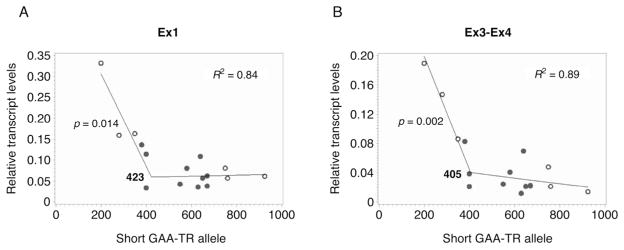Figure 2. Repeat length-dependent FXN transcriptional deficiency in FRDA is modulated by the shorter of the two expanded GAA-TR alleles containing <400 triplets.

Relative FXN transcript levels (Y axis) of FRDA patients (n = 16), homozygous for a wide range of expanded GAA-TR alleles (200 – 1122 triplets), plotted against the length of the shorter of the two expanded alleles (X axis). (A) A piecewise bilinear regression model showed strong correlation (R2 = 0.84) between FXN transcript levels measured at Ex1 and the length of the shorter GAA-TR allele; highly significant correlation (p = 0.014) was seen with alleles shorter than the estimated breakpoint of 423 triplets (95% CI, 353 – 494 triplets). (B) A piecewise bilinear regression model showed strong correlation (R2 = 0.89) between FXN transcript levels measured at Ex3-Ex4 and the length of the shorter GAA-TR allele; highly significant correlation (p = 0.002) was seen with alleles shorter than the estimated breakpoint of 405 triplets (95% CI, 346 – 464 triplets). Note: open circles depict the six cell lines that were used for assessing repeat length-dependent FXN promoter silencing in Fig. 3B.
